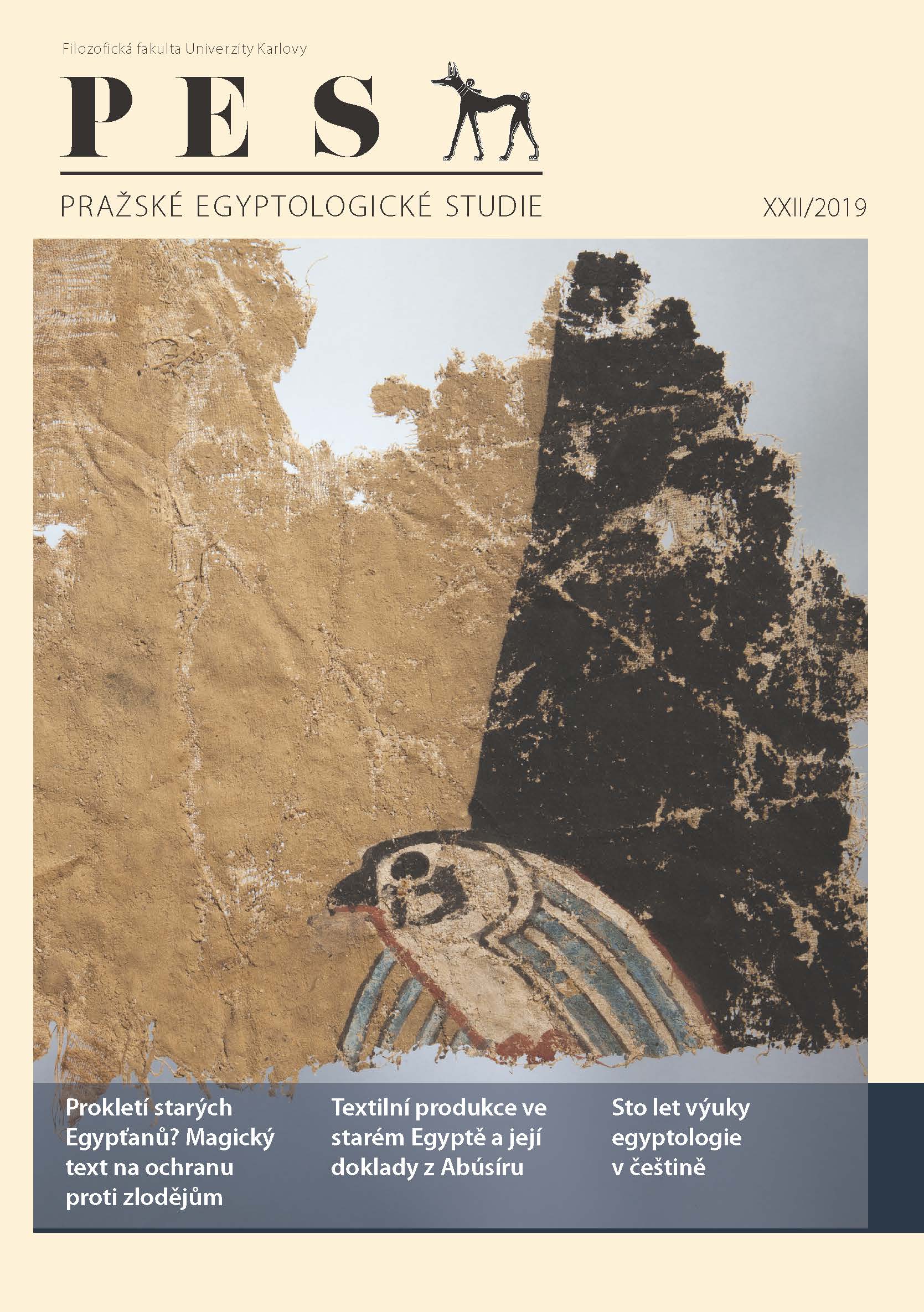Moncu – válečník v době 18. dynastie
Montu – warrior in the Eighteenth Dynasty
Author(s): Daniel ŠichanSubject(s): History, Ancient World
Published by: Univerzita Karlova v Praze - Filozofická fakulta, Vydavatelství
Keywords: Montu; ruler; Eighteenth Dynasty; Amun; war; bull;
Summary/Abstract: The article deals with the role of the warlike god Montu within the framework of the power ideology of Eighteenth Dynasty rulers based on the interpretation of written as well as iconographic sources. According to the author, the preserved testimony calls for a more detailed evaluation of Montu’s position as a warlike deity in close connection with the military enterprises of Eighteenth Dynasty rulers. The current combat character of Montu acquires a new dimension, which logically derives from the New Kingdom warfare. Although the direct references to Montu as a combative deity are surprisingly not numerous for the discussed period, these examples provide clear evidence of the unprecedentedly varied expression apparatus in written and iconographic form relating to this god. In this respect, the Eighteenth Dynasty represents an imaginery peak which later undoubtedly served as an inspirational source for the expressive means, not only in the case of Montu. The sovereign as a warrior no longer accepts passively the abilities of the deity but becomes Montu himself. The cultic and ideological interaction between Montu and the dynastic god Amun is also discussed which directly leads to effort to adequately describe their common features and, above all, to emphasize the differences in capturing their militant qualities. Moreover, the author contemplates the possible impact of the cult of Montu’s bull in Armant, Tod, Medamud and Waset on the development of the royal titulary at the very beginning of the Eighteenth Dynasty (the appearance of the new element kA nxt, “the winning bull”, in the Horus name). Remarkable is the absence of Montu’s combative role in textual as well as iconographic sources concerning the first five rulers of the Dynasty (from Ahmose II to Hatshepsut). It is the question whether this new element in the titulary of these monarchs, who were very active militarily, did not reflect the aforementioned cult of the bull in some way and if the worship of Montu’s warlike character figuratively adverts to their actually waged wars.
Journal: Pražské egyptologické studie
- Issue Year: 2019
- Issue No: 22
- Page Range: 81-94
- Page Count: 14
- Language: Czech

